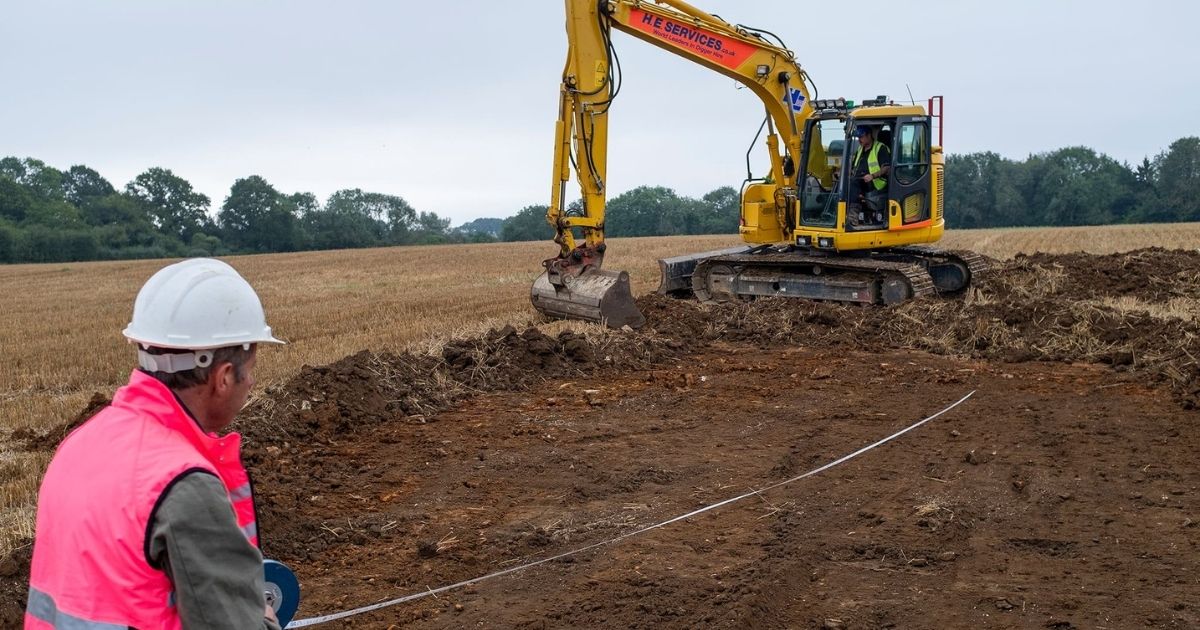If you think you do interesting and specialized work, you need to meet brothers Colin and Sean Welch of Crater Locators.
The two men are conflict archaeologists, and as their Twitter states, they are involved in “award-winning Research Resource Archaeology” and specialize in “the accountable archaeology of the V-weapons offensive of 1944-1945.”
While some of their former finds include V1 “flying bombs,” according to Live Science, their newest discovery has history buffs and locals alike buzzing.
For several days in September, the two were stationed in Platt, a city in southeast England, working on excavating the remains of a V2 — the world’s first supersonic rocket — that was fired by Nazi Germany on a Valentine’s Day long ago, headed for London.
[firefly_embed]
[/firefly_embed]
The rocket ultimately fell short of that target and exploded, and at the time of impact was going 3.5 times the speed of sound, according to an article by H.E. Services. It stayed buried in the middle of a cornfield, becoming the brothers’ sixth big V2 excavation project.
Platt Memorial Hall posted on Facebook about the important work they were doing, reassuring locals that the activity was “nothing sinister.”
[firefly_embed]
[/firefly_embed]
“If you happen to be driving along Long Mill Lane from Platt to Crouch, you may spot excavations going on in one of the fields between the two villages,” the hall shared on Sept. 20.
“Don’t worry, it’s nothing sinister and crime-related, but the work of Colin and Sean Welch from Research Resource Archeology, who have identified the site of the V2 rocket that crashed and exploded there during the small hours of Valentine’s Day, 1945.
V2 Platt September 2021: 1.3 metres down, establishing second infill crater shape which compared to first scrape (300mm) will provide crater slope inclination. Great machine from @planthireHE and first class help from Pearson TQ Royal Engineers training team #Archaeology pic.twitter.com/QsJySRcOsH
— Crater Locators (@CraterLocators) September 20, 2021
“I have known about the V2 for many years, but never knew the exact location in the field, so this is an exciting discovery.
“Already they have found fragments of the device and will be on-site for the next three days before backfilling on Thursday.”
In the few days they were on the site, the team was able to uncover pieces of the rocket’s combustion chamber and numerous other fragments and hardware, totaling 1,760 pounds of artifacts to clean, preserve, photograph and catalog.
V2 Platt Thursday 23rd September 2021: study completed, finds analysis, conservation, recording and cataloguing next, then report for KCC HER and major concerns involved. Enormous thanks to Pearson TQ and HE services. Very successful excavation @planthireHE #Archaeology pic.twitter.com/iPztLFYnYM
— Crater Locators (@CraterLocators) September 23, 2021
“This has been a very important project for us because in archaeological terms, the site was pristine (unadulterated: no previous study, no domestic refuse in the crater) which gave us a real chance to understand what happens when 4 tonnes of V2 rocket hits the ground,” Colin said.
“The other major factor is the dissemination of our work. We believe that it is critically important to share our work and discoveries — our V2 excavations always attract great interest from the community (which we welcome and encourage) as a way of making this history our community history.”
This article appeared originally on The Western Journal.

























 Continue with Google
Continue with Google